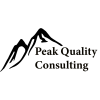New member so sorry if the questions sound stupid by your trained professional standards.
We are a Canadian company who is being forced by our new Canadian Food Safe legislation to transition from our Provincial Agriculture HACCP recognition to global standards. I've recommended BRC Global Standard for Packaging and Packaging Materials to management as the most logical to transition to (opinions welcomed). We are a company that prints BOTH food-contact (about 15% of the time) and non food contact (85% of the time) labels only. No food components on site ever.
Not having purchased the full BRC Packaging and packaging materials manual yet, I've only briefed my committee on what to expect, with the free downloadable version and any information I've gleaned from forums.
I am having a difficult time determining how we can (if even possible) separate the high-risk (food-contact) and low-risk (non-food contact) portions of the business out for the purposes of the BRC program. Is it even possible for run a high and low risk parallel standard if implementing BRC?
When we produce food-contact labels (high-risk portion) it is only done in a small portion of our production plant. We already implement sanitization protocols throughout this process. Majority of our cleaning, maintenance, shipping and receiving operate under the HACCP food-contact (higher) standards all the time.
Some of our employees never come in contact with any of the food-contact portion of production. I am having a bit of a nightmare with things like the jewelry (facial piercings), hair/beard nets, etc. with the majority of production staff that will never work in food-contact production.
Any and all suggestions are welcomed.
















